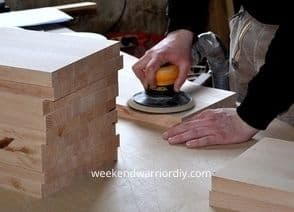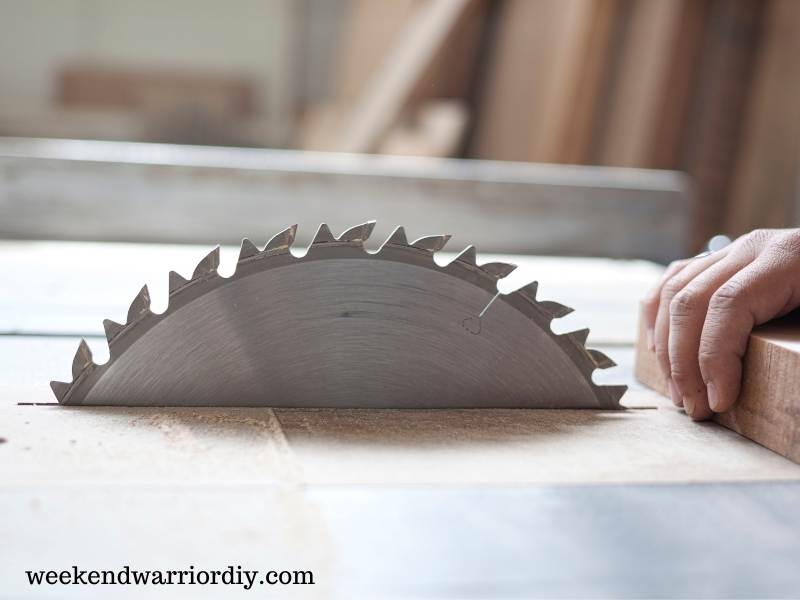Woodworking is more than just a craft—it’s an art form that hinges on the careful selection of the right wood species. Whether you’re fashioning furniture, constructing cabinets, or embellishing with decorative items, the choice of wood can make or break your project.
Each wood species possesses distinct characteristics that influence not only the appearance but also the strength and longevity of the final product. With a vast array of wood species at your disposal, navigating the selection process can be daunting.
That’s where this guide comes in. I’ll be your guide, leading you through the intricate world of wood species, unraveling their unique properties, and shedding light on their diverse applications.
By gaining a deeper understanding of these woods, you’ll be equipped to make informed decisions, ensuring that your woodworking projects are not only visually stunning but also structurally sound and enduring.
So, let’s embark on this journey together, delving into the rich tapestry of wood species to uncover the perfect material for your next masterpiece.
Hardwoods vs. Softwoods
Characteristics of Hardwoods
Hardwoods, sourced from deciduous trees, boast remarkable density and durability. Their intricate cellular structure contributes to their resilience, rendering them suitable for a myriad of applications.
Whether it’s crafting exquisite furniture pieces or laying down sturdy flooring, hardwoods excel due to their robust nature and aesthetic appeal.
Characteristics of Softwoods
Softwoods, harvested from coniferous trees, exhibit a contrasting profile to hardwoods. Although they lack the density of their hardwood counterparts, softwoods remain highly valued for their affordability and ease of manipulation.
Their lower density makes them easier to work with, making them favored choices for construction projects and outdoor endeavors where versatility and cost-effectiveness are paramount.
Common Hardwood Species
Oak
Oak is a popular hardwood known for its strength and durability. It’s commonly used in furniture making, flooring, and cabinetry due to its attractive grain patterns and excellent finishing properties.
Maple
Maple is another hardwood prized for its durability and versatility. It’s often used in kitchen cabinets, cutting boards, and musical instruments due to its light color and smooth texture.
Cherry
Cherry wood has a rich, reddish-brown color that darkens with age, giving it a warm and elegant appearance. It’s commonly used in high-end furniture and decorative items.
Walnut
Walnut is a dark, dense hardwood known for its striking grain patterns and rich color. It’s often used in fine furniture and decorative accents, adding a touch of luxury to any project.

Common Softwood Species
Pine
Pine is a softwood with a light color and straight grain. It’s widely used in construction and woodworking projects, including furniture, trim, and paneling.
Cedar
Cedar is prized for its natural resistance to rot and insects, making it an excellent choice for outdoor projects like decks and fences. It also has a pleasant aroma and beautiful grain patterns.
Spruce
Spruce is a lightweight softwood with a pale color and straight grain. It’s commonly used in construction and musical instrument making due to its strength and resonance.
Exotic Wood Species
Mahogany
Mahogany is a luxurious hardwood with a deep, reddish-brown color and straight grain. It’s highly prized for its beauty and durability, making it a popular choice for high-end furniture and interior trim.
Teak
Teak is renowned for its natural oils and resistance to moisture, making it ideal for outdoor furniture and marine applications. It has a rich, golden color that darkens with age and exposure to sunlight.
Ebony
Ebony is a dense, dark hardwood prized for its striking color and fine texture. It’s often used in high-end woodworking projects and decorative accents, adding a touch of elegance and sophistication.
Factors to Consider When Choosing Wood
When selecting wood for your projects, several factors should be taken into account:
- Project requirements: Consider the intended use and design aesthetic of your project.
- Durability: Choose a wood species that can withstand the conditions it will be subjected to.
- Cost: Balance your budget with the quality and appearance of the wood.
Selecting the Right Wood for Your Project
To ensure the success of your woodworking project, carefully consider the characteristics of each wood species and how they align with your project needs.
Whether you’re looking for strength, durability, or aesthetic appeal, there’s a wood species that’s perfect for the job. Be sure to purchase quality wood from reputable suppliers to achieve the best results.
| Wood Species | Project Ideas |
| Oak | 1. Dining table<br>2. Bookshelf<br>3. Hardwood flooring<br>4. Cabinet doors<br>5. Bed frame |
| Maple | 1. Cutting board<br>2. Kitchen island<br>3. Guitar body<br>4. Picture frame<br>5. Jewelry box |
| Cherry | 1. Coffee table<br>2. Dresser<br>3. Wine rack<br>4. End tables<br>5. Desk |
| Walnut | 1. Sideboard<br>2. Mantel shelf<br>3. Jewelry chest<br>4. Floating shelves<br>5. Bar stools |
| Pine | 1. Adirondack chair<br>2. Garden bench<br>3. Toy chest<br>4. Dog house<br>5. Birdhouse |
| Cedar | 1. Outdoor picnic table<br>2. Deck railing<br>3. Fence panels<br>4. Planter boxes<br>5. Cedar chest |
| Spruce | 1. Workbench<br>2. Utility shelves<br>3. Sawhorses<br>4. Wooden pallets<br>5. Tool storage cabinet |
| Mahogany | 1. Grandfather clock<br>2. Highboy dresser<br>3. Display cabinet<br>4. Executive desk<br>5. Mahogany boat |
| Teak | 1. Outdoor dining set<br>2. Teak shower bench<br>3. Yacht decking<br>4. Patio furniture<br>5. Teak garden bench |
| Ebony | 1. Piano keys<br>2. Fine woodworking inlays<br>3. Ebony walking stick<br>4. Jewelry components<br>5. Luxury pens |
Shou Sugi Ban: Enhancing Wood with Fire
Shou Sugi Ban is a traditional Japanese technique that involves charring wood to enhance its durability and appearance.
While any wood species can be used for Shou Sugi Ban, some are better suited for this process due to their natural characteristics.
Here are the top woods to use for Shou Sugi Ban and five small projects perfect for this technique:
| Wood Species | Best for Shou Sugi Ban |
| Cedar | With its natural resistance to rot and insects, cedar is an excellent choice for Shou Sugi Ban, producing beautiful results. |
| Cypress | Cypress is another ideal wood for Shou Sugi Ban, known for its durability and resistance to decay. |
| Douglas Fir | Douglas Fir is a popular choice for Shou Sugi Ban due to its straight grain and ease of charring. |
| Redwood | Redwood’s natural beauty and resistance to decay make it well-suited for Shou Sugi Ban, creating striking visual effects. |
| Pine | While pine may not have the same natural durability as cedar or cypress, it can still be used for Shou Sugi Ban with stunning results, especially for indoor projects. |
Small Projects for Shou Sugi Ban
- Charred Wood Wall Art: Create unique wall art by charring wood planks and arranging them in a visually appealing pattern.
- Charred Wood Serving Tray: Craft a stylish serving tray by charring the surface of a wooden board and adding handles for convenience.
- Charred Wood Planters: Build rustic planters for indoor or outdoor use by charring wooden boxes and sealing them for durability.
- Charred Wood Coasters: Make elegant coasters by charring small wood slices and sealing them with a protective finish to prevent damage from moisture.
- Charred Wood Candle Holders: Fashion candle holders by charring wooden blocks and carving out spaces to hold candles securely, adding a touch of warmth to any room.
Conclusion
In the world of woodworking, the choice of wood species can make or break a project. It’s not just about aesthetics; it’s about functionality and longevity too.
By delving into the unique traits and applications of various wood types, you empower yourself to craft pieces that not only look stunning but also stand the test of time.
Whether you’re drawn to the rich tones of hardwoods, the versatility of softwoods, or the allure of exotic woods, rest assured, there’s a wood perfectly suited to bring your vision to life.
So, next time you embark on a woodworking endeavor, take the time to select the right wood—it’s the foundation of your masterpiece.
Common Follow-up Questions Answered
- How do I determine which wood species is best for my project? Consider factors such as project requirements, durability, and cost to narrow down your options.
- Where can I purchase quality wood for woodworking projects? Look for reputable suppliers, such as lumberyards or specialty woodworking stores, that offer a wide selection of high-quality wood species.
- Are exotic wood species more difficult to work with than domestic woods? Exotic woods may require special tools and techniques due to their density and unique properties, but with proper care, they can yield stunning results.
- Can I mix different wood species in the same project? Mixing wood species can add visual interest to your project, but be sure to consider how they will complement each other in terms of color and grain pattern.
- What is the best way to finish different wood species? The best finishing technique will depend on the specific characteristics of the wood species you’re working with. Experiment with different finishes to find the perfect look for your project.



